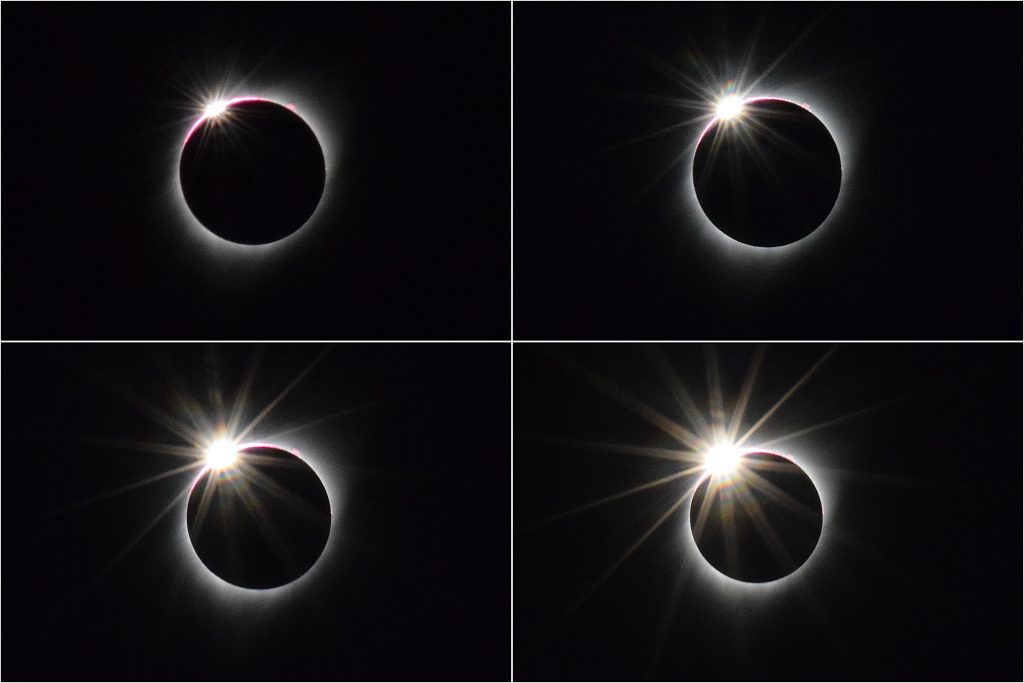By Heidi Toth
NAU Communications
“Surreal.”
“Unforgettable.”
“Like nothing I have ever experienced before.”
“It left me speechless.”
“I cried.”
By now everyone’s seen images of the total solar eclipse on Aug. 21: the darkened sky, the halo effect of the sun shining around the moon just before and after totality, the “diamond ring” as the moon fully blocked the sun. A few students and faculty members from Northern Arizona University experienced those moments live in the small towns of Madras, Oregon, and Challis, Idaho, two places on the path of totality that provided unparalleled views of the eclipse.
While in those places, surrounded by other people experiencing the same phenomenon, they took part in science education programs.
Madras, Oregon, population 6,729
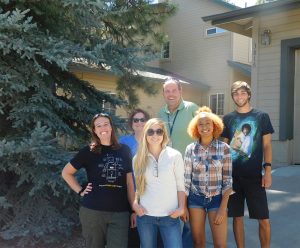
Two NAUTeach students and three faculty or staff members from the Center for Science Teaching and Learning went to Madras, both to see the eclipse and take part in a STEM fair that bookended the eclipse.
The trip was intended to get the students excited about teaching science in fun, hands-on ways.
“Our program wants to have teachers who are really well-prepared to go out and teach students science, and the way you learn science and mathematics is by engaging in it and doing it, not just reading about it and then answering questions,” associate research professor Sharon Cardenas said.
To that end, the group helped at a star party that Lowell Observatory put on the night before, then ran an NAU booth at the STEM fair where they made little sun dials, demonstrated the distance from Pluto to the sun, shot off rockets, played Space Jeopardy (with NAU swag, including pencils that change color with body heat, as prizes) and read Navajo artist Baje Whitethorne’s book describing the Navajo legends of solar eclipses. This happened all day Monday, with a lengthy break in between as the eclipse began.
Even forgetting about the eclipse, the plan worked.
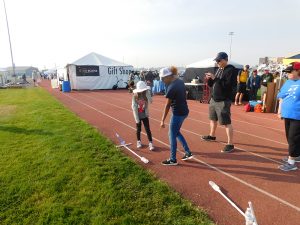
“The best part was easily all that I learned just from being surrounded by the scientific community and seeing the public’s interest in space
exploration and science,” said Nicholas Miritello, a senior secondary education major from Gilbert. “It reinforced my desire to become an
educator in science.”
But we can’t forget about the eclipse, either. That is what brought thousands of people to the football field in a little town no one had heard of until now. Nature’s light show did not disappoint.
“The experience was completely unlike what I expected,” Miritello said. “In the hour that the eclipse approached, the temperature dropped probably 10 degrees, and this eerie gray darkness started to fall—almost like you were looking through sunglasses. At the point of totality, it looked like a 360-degree sunset.
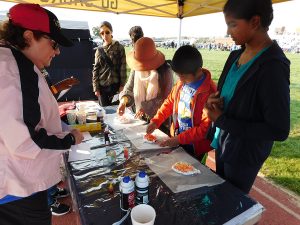
“The sky was dark, and stars were visible in the middle of the morning. The temperature had dropped around 20 degrees, and there was a nice, cool breeze. All the while, the sun was a hole in the sky, surrounded by the bright white brilliance of the corona. It was completely surreal.”
Everyone else echoed his awe.
“When we were able to remove our glasses and see the corona of the sun, it’s like nothing I ever saw before,” Cardenas said. “Looking at the corona and seeing how far it extended from the actual surface of the sun, it’s like looking at the aura of the source of all energy. The diamond ring was the best part for me; it felt like a blessing, a renewal, a new start on life that is still with me.”
“It really is so amazing that everything lines up perfectly in order to make an eclipse happen; it makes you think about all the wonder that is in the universe,” said Holly Havlicek, an Americorps VISTA volunteer working with CSTL. “The best part was when totality hit and we were able to take off our
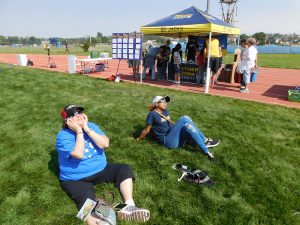
glasses and everyone started clapping and cheering. Sharing that moment was really special.”
“I was completely blown away by how inspiring the whole experience was,” said Christine Sapio, a two-time alumna of NAU and an NAUTeach mentor and teacher at Coconino High School. “I’ve studied astronomy for most of my life, so I thought I was prepared for the eclipse, but actually being there was a totally immersive experience. The temperature drop, the twilight and total darkness, getting to the hear the collective gasps from the thousands of
people on the field were all amazing.”
Challis, Idaho, population 1,041
Four members of NAU’s Astronomy Club headed almost due north to Challis, near the Land of the Yankee Fork State Park, to experience totality and help provide education to people heading there. They didn’t pick Challis, said Kathleen Stigmon, senior program coordinator of the NAU/NASA Space

Grant program, which provided most of the funds for the trip. Challis picked them.
“The town wanted to provide some type of eclipse outreach for their town of about 1,000 people,” Stigmon said. “The park ranger who reached out and the local grocer paid for our camping fees there.”
The students—Josie Schindler, Kaitlin Farley, Alex Nelson and Amanda Binkley—listed a variety of reasons why they went on the trip. Binkley, a junior geology major from Colorado Springs, was excited to experience totality, but she went mostly to get volunteer hours in science education and help other people have their best experience. She wants to go into planetary science, and this provided good hands-on experience.
The weekend did provide that; they spent the days leading up to the eclipse, as well as Monday, offering
education to the other travelers who wanted to experience totality. They brought two Dobson telescopes
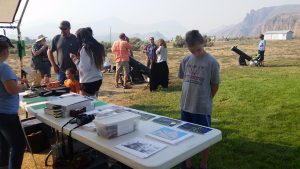
— one eight-inch and one 10-inch—for the star party and so people could safely look at the sun during the eclipse. They also answered astronomy questions and brought a PowerPoint presentation on celestial events that ran in the state park’s visitor’s center.
Nelson, a senior computer science major from Phoenix, has always wanted to see a total eclipse, so this was too good an opportunity to pass up. She spent Saturday helping people make lanyards from ultraviolet beads, at the same time explaining how the beads change color based on how much ultraviolet light gets to them. She spent Sunday and Monday at the telescopes, allowing people to observe the sun and pointing out sunspots.
But as with everywhere else in the path of the totality, the eclipse eclipsed
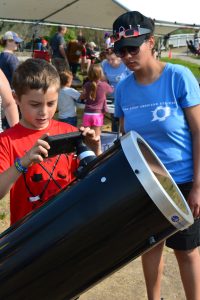
the other activities. As totality approached, everyone in the park looked to the sky. It didn’t disappoint.
“It was surreal, to say the least,” Binkley said. “During totality, there was a moment when everyone cheered at the sight. It was experience that connected not only an entire town but people from all over the country under one event.”
“As the partial eclipse started to inch toward totality, I noticed the temperature began to drop,” Nelson said. “I actually had to put on a jacket to keep warm. There was a noticeable shift toward twilight, which felt weird since it was almost noon. There were loud cheers once totality hit, and then it hushed as everyone took in the quick moment we had.”
